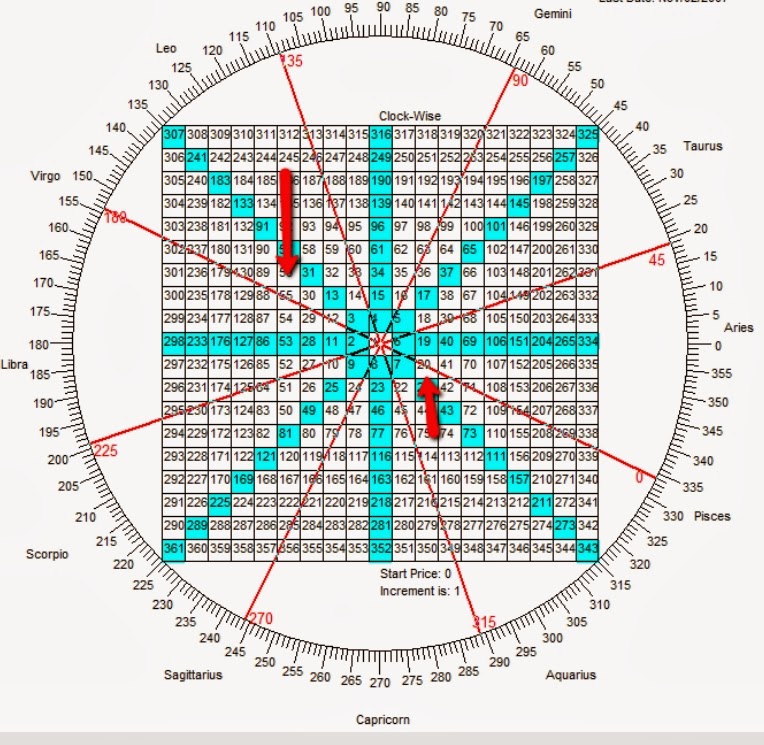Between the 1929 and 1987 tops there were pretty darn close
to 6 squares of 395. Here are bunch of
contemporary examples:
You can take the rounded # of intervals and come up with
some pretty interesting ratios.
18/12=1.5, 20/12=1.667, 26/18=1.44.
[In a separate essay I proposed SPX vibrates according to a 121.43 square.]
What’s the cause? Per
BC:
“Briefly, this happens when the PTV
(Price Time Vectors) is pointing parallel to either the price or time axes,
defining the limits of the square.”
Two components of that
explanation. First, parallel to the
price or time axes and second, the limits of the square.
In “Four Dimensional Stock Market
Structures and Cycles” aka 4D, BC develops his concept of PTV and the
repetitive patterns of equilateral price triangles in the market. In developing those concepts he describes the
normal upright nature of market triangles.
They will randomly tilt right and left.
On page 27 he describes a triangle that tilts hard right relative to the
price and time axes. That puts the left
side of the triangle very flat relative to the time axis. That doesn’t exactly comport with the
greatest rally in history, namely 2009 to 2014.
Very steep price rise. But
perhaps that’s not what is being measured.
Rather the very flat side being highlighted by the intervals is the
period 2000 to 2014. Fourteen years
during which time the DJIA top increased from 11908 to just under 17000. An upward slope but far less than a 1X1 Gann
angle. That’s the mother of all triple
tops (triple tops do not have to be flat, they can slope upwards).
So what happens to the right side
of the equilateral triangle when the left side of the price triangle has such a
flat top? BC gives the example of DJIA from March to
June 1991. Sideways, upward sloping and
the two days down 10%. The triangle
preceding the drop had a left side tilted well right.
The second part of BC’s
discussion above; a square is ending.
Obviously, a cycle is ending. The
cubic structures on pages 84 and 85 show price retracing the edge of the
square/cube in both the 1929-1932 and 8/1987-12/1987 declines. When large squares complete, it would seem BC
is saying ‘stuff’ will happen. And what
greater bull market has there ever been?
Arguably, 2009-14 is (soon to be 'was'?) the greatest. And what has been the greatest of all triple tops?
Jim
















































